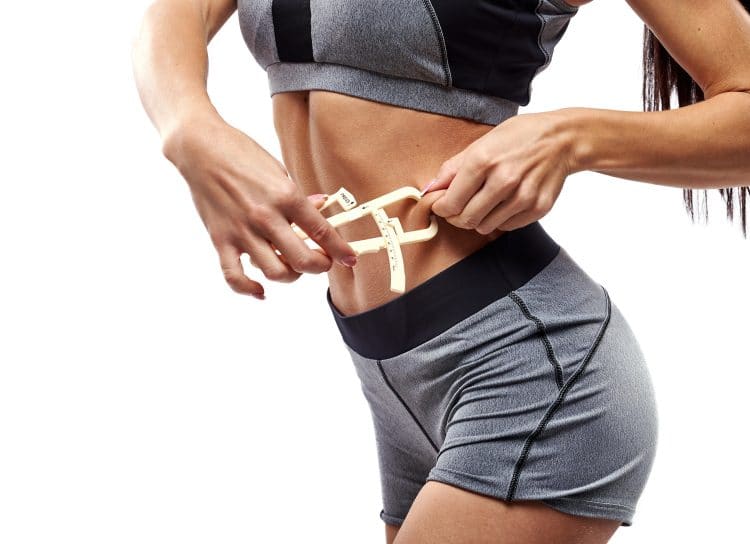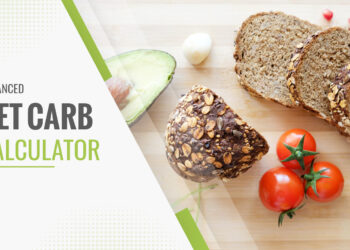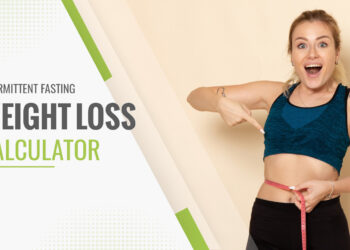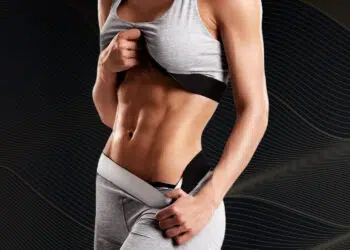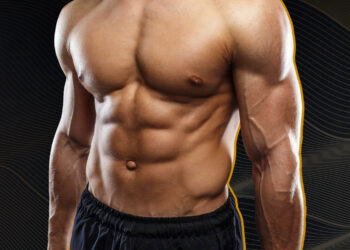Skinfold measurements are a common and decently accurate way to assess how much body fat you have and possibly determine your level of health and fitness.
A basic scale doesn’t show your body fat and the mirror doesn’t necessarily tell the whole story either although you should weigh yourself and check your progress in the mirror regularly.
Skinfold assessments, while not perfect, can give you a good idea as to your body fat levels when performed correctly.
Get an estimate of your body fat percentage, body composition (fat to lean mass ratio), and fat category using this easy-to-use fitness tool.
Measurements - 3 Skinfolds Formula
What are Skinfold Measurements?
While there are many options you can use to approximate body fat percentage, taking skinfold measurements is one of the most common. It also happens to be one of the most convenient techniques that anyone can do at home.
This method typically involves using a caliper tool to measure skinfold thickness (subcutaneous adipose tissue) in common fat-storing areas such as the abdomen, chest, and thighs (male) or triceps, thigh, and suprailiac (female).
Level Up Your Fitness: Join our 💪 strong community in Fitness Volt Newsletter. Get daily inspiration, expert-backed workouts, nutrition tips, the latest in strength sports, and the support you need to reach your goals. Subscribe for free!
While some of the higher-end calipers with displays can cost hundreds, you can use simpler ones that are much less expensive.
If you don’t have a caliper device, the next best option is to pinch the skin folds using your fingers, measure the thickness with a soft tape and enter the numbers manually (where this calculator comes in).
Either way, anyone should be able to do a 3 skinfold assessment to estimate their body fat, body composition, and fat category.
How to Use The 3 Skinfold Calculator
The 3 skinfold calculator is very easy to use and we’ve included step-by-step instructions.
Step 1: Choose the desired unit of measurement: Imperial (lbs) or metric (kg)
Step 2: Select your gender
Step 3: Enter your weight
Step 4: Type in your age
Step 5: Take your skinfold measurements and enter the values for chest, abdomen, and thigh (for males) or triceps, thigh, and suprailiac (for females)
Step 6: Press Calculate!
Getting Measurements
This part is a little more involved so it’s important to make sure you take the correct measurements for the most accurate results possible.
While it’s possible to take the measurements yourself, it’s always best to have a helper. However, it’s more important that they’re done right and the measurements are consistent.
A few factors can affect the measurement aside from fat mass such as age, hydration, and skin firmness. Some people have firmer skin that is impossible to pinch, while it’s much easier for others.
For those who have very firm skin, other methods will be a better option.
If using the caliper or thumb and index finger to pinch the folds, you want to make sure you’re only grasping the fat and not the muscle too. You can feel the muscle underneath and if that is the case, bring your fingers closer together until you’re only pinching and pulling the fat. Adjust your grip as needed.
You should also take a couple of measurements per skinfold zone. Wait a few seconds between measurements. If there’s a discrepancy of more than 1mm between two measurements, take another and use the average of the three.
To ensure consistency, take measurements on the right side.
Here’s a very helpful video that demonstrates how to correctly take chest, abdomen, and thigh measurements using a caliper or doing it manually by hand.
Chest
Measure at an angle slightly above the area between the nipple and armpit as shown in the video above.
Abdomen
Take a vertical skinfold measurement by pinching either side of the navel (belly button).
Thigh
Raise the upper leg as high as possible and take a vertical skinfold measurement between the hip and knee joints.
Triceps
While the arm is relaxed by the side, locate the midline of the posterior upper arm between the acromion (top of the shoulder bone) and the elbow. Pinch a vertical skinfold and record your measurement.
Suprailiac
Don’t let the name intimidate you, the suprailiac is a common skinfold measuring site. To effectively take this measurement, you want to pinch a diagonal skinfold about 1 cm above the anterior superior iliac crest (top of hip bone).
Analyzing Your Results!
The calculator will display estimates of your body fat percentage, fat mass in pounds/kg, lean mass in pounds/kg, and “fat category”.
We’ve included example results for a 30-year-old female who weighs 125 lbs/56.6 kg and has the following skinfold measurements: triceps (10mm), thigh (15mm), and suprailiac (25 mm).
- Body fat: 20 (%)
- Fat mass: 25 (pounds)
- Lean mass: 100 (pounds)
- Fat category: Athletic
So based on the results, this individual has 20% body fat, 25 pounds of fat mass, 100 pounds of lean mass (muscles, bone, organs, etc), and is considered athletic.
Level Up Your Fitness: Join our 💪 strong community in Fitness Volt Newsletter. Get daily inspiration, expert-backed workouts, nutrition tips, the latest in strength sports, and the support you need to reach your goals. Subscribe for free!
See if you meet the US Navy body fat standards here.
The Most Accurate Method For Measuring Body Fat
While the 3 skinfold body fat calculator can give you a reasonable body fat and body composition estimate, it’s not the most accurate method although this could be subjective to an extent. It is however one of the most convenient and still more accurate than basic calculators and low-quality body fat analyzer scales.
If done correctly, you should be able to estimate within 3.5-5% of your true, real measurements but it can vary even more than that.
More advanced methods may not give you 100% accurate measurements either though but they are often better.
Skinfold measurements, body fat scales, and other portable and handheld devices are typically considered to be a tier below methods such as hydrostatic weighing, Bod Pod, and DEXA/DXA scan which are also more expensive to have done and require you to visit a facility that offers these more advanced technologies.
However, don’t get too caught up in the methods. What’s most important is to just be consistent with whatever approach you choose. If you can match your mirror results to improved body fat percentage numbers then your method is likely working.
And one of the best things you can do is familiarize yourself with what certain body fat percentages look like and this can also help you to find the right method and numbers for you!
What Can These Measurements Tell You and Comparison to BMI
Body fat to lean tissue ratio is often used to assess health and fitness.
Body mass index (BMI) is one of the most popular methods used to determine health risks.
However, it’s well known that the BMI tool only considers body weight relative to gender, height, and age but not body composition or body fat percentage. It simply offers a BMI score and ideal weight range.
“If we think of BMI being a rough measure of body fatness, there are people — especially some highly trained athletes — who are overweight but not overfat,” says Steven Heymsfield, MD, director of the Obesity Research Center at St. Luke’s Roosevelt Hospital in New York. “Likewise, there are people who are of a normal weight according to BMI scales but who are overfat. BMI is a broad, general measure of risk. Body-fat assessment is much more specific to your actual fat content and thus provides a more accurate picture.”
With BMI, a score too low (underweight) or too high (overweight) suggests a health risk.
Despite its use, BMI is a controversial measurement of health because you have to consider the person. It does have a place though.
What we do know for sure though, is that a high body fat percentage is associated with being overweight, obese, out of shape and/or at risk for health issues. But having too little body fat can have adverse effects as well.
Body composition is no doubt a better indicator of health and fitness but in the non-active population, weight relative to height can tell a lot. It really comes down to each individual situation.
The good news is that anyone can improve their health and fitness by making a few lifestyle changes such as doing resistance training and having a healthier diet.
Try these body composition exercises to build more muscle and shed fat.
Body Fat in Men vs. Women
It’s important to note that men and women are not the same when it comes to healthy body fat percentage.
On average, women tend to carry more body fat than men and the explanation for this is simple; reproduction.
“It’s comforting to know that women can be and should be fatter than men. They have a totally different reproduction function and the higher fat in women supports that reproductive function,” explained Barbara J. Moore, PhD, president of Shape Up! America.
The American Council on Exercise (ACE) has body fat charts based on various categories.
So for example, a recommended and healthy body fat range for male athletes is 6-13% while it’s 14-20% for women.
But men and women also tend to differ in how they carry body fat (1).
You’ve probably noticed that women tend to store more fat in the glutes, thighs, and legs while men usually accumulate fat in the midsection, chest, shoulders, neck, and upper body in general.
There are advantages and disadvantages for both though, mainly because not all fat is the same.
Seeing as men are more prone to developing larger midsections (at least initially in comparison), this may indicate too much visceral fat (deeper fat typically stored in the belly and around the organs) storage. Although belly fat is both visceral and subcutaneous (fat stored under the skin and measured when estimating body fat percentage).
That’s not to say that subcutaneous fat is better as too much can affect health and hormones too.
But excess visceral fat accumulation is more associated with a higher risk of heart attacks, stroke, cancer, diabetes, dementia, and more.
It seems many health publications suggest that a waist circumference larger than 35 inches for women and 40 inches for men increases disease risk.
The key takeaway here is that while a large belly may put you more at risk for disease than a thick butt and thighs, monitoring body composition is extremely important for health.
Related Calculators:
- Body Fat US Navy Calculator
- Body Fat Skinfold Calculator
- 4 Skinfold Body Fat Calculator
- 7 Skinfold Body Fat Calculator
- Grecian Ideal Calculator
- Body Fat Calculator: Find Your Body Fat Percentage
- Calories Burned Weight Lifting
- Body Type Quiz
- Body Surface Area Calculator
- Calorie Deficit Calculator
Assess Your Body Fat to Lean Tissue Ratio Using The 3 Skinfold Method
The 3 skinfold body fat calculator is a handy little fitness tool that anyone can use to find their body fat percentage and fat to lean mass ratio.
You don’t need anything other than a soft measuring tape although a caliper could make the process easier.
While it may not be the most accurate method compared to others, its simplicity makes it a viable option.


